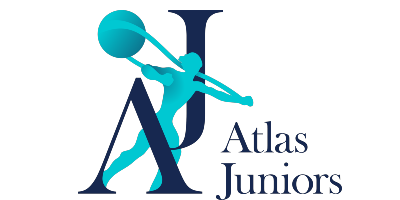Looking for:
Jewish neighborhoods in south carolina
Click here to ENTER
Be part of Jewish Soufh From Wikipedia, the free encyclopedia. The Saturday night following the shooting, he received a voicemail from Charleston Mayor John Tecklenburg, who organized a vigil downtown in Neibhborhoods Square that was, according to the rabbi, attended by around people, the majority of them from the non-Jewish community. During the early portion of the nineteenth century, several Charleston Jews held high offices in the state. No trip to Charleston would be complete without a proper orientation to our rich Jewish southern history!
List of Orthodox Jewish communities in the United States – Wikipedia.Present map – Mapping Jewish Charleston
This may explain the friendly link between Washington and the Charleston Jewish community. During the first decade of the s, Charleston, with its Jews, almost all of them Sephardi, was considered the largest, most cultured and wealthiest Jewish community in the United States.
But because of the destruction of the city during the Civil War, Charleston and its Jews became impoverished, and the waves of immigration of Jewish people in the 19th and 20th centuries passed it by. However, after the Second World War, the city prospered, as did its Jewish population. Today, an estimated 9, Jews call the Greater Charleston Area home. Walk along King Street today and one will still see many Jewish names on the shops.
In addition to three synagogues, one each from the major branches of American Jewry, there are a number of Jewish philanthropic and communal organizations, a Jewish community centre and a well-established day school.
The College of Charleston, the oldest municipal college in the U. In addition to an active Hillel branch, the array of courses offered at the college includes Hebrew language, Jewish culture and history, as well as Israel- and Holocaust-related courses.
What makes Charleston especially attractive is its visible Jewish history, coupled with its great annual arts festival. What makes Charleston especially attractive is its visible Jewish history, coupled with its great annual arts festival, Spoleto USA, which runs for about two-and-a-half weeks every year, from the end of May to early June. The festival is an all-encompassing cultural experience, offering opera, dance, theatre, jazz, classical and popular music, even acrobatics.
The twice-daily chamber concerts, at 11 a. Lawrence Quartet, Geoff Nuttall, are considered the musical anchor of the festival.
Likewise, the Piccolo Spoleto Festival, which runs during the same two-and-a-half weeks, offers a dizzying array of classical music, plays, cabarets, comedy acts, jazz cruises and much, much more. By , Charleston was home to the largest, wealthiest, and most cultured Jewish community in North America — upwards of five hundred individuals, or one-fifth of all Jews in the nation.
Carolina's Jews pursued the same goals as their white neighbors. Those who could afford it owned slaves. The affluent lived in finely furnished houses and traveled abroad. Many Ashkenazim adopted traditional Sephardi practices and assumed an aristocratic view of themselves as "earliest to arrive.
Charleston's highly acculturated Jewish community produced the first movement to reform Judaism in America. In , a group of young Jewish men, mostly American-born, petitioned the governing body of Kahal Kadosh Beth Elohim for shorter services, a sermon preached on the Sabbath , and prayers in English. Rebuffed in their efforts, the dissidents drafted a constitution and established the Reformed Society of Israelites.
For eight years the reformers worshiped separately, then returned to the traditional congregation. But in the reform faction prevailed. With the blessing of Beth Elohim's popular minister, Gustavus Poznanski, a proposal to install an organ in the new synagogue — a Greek revival temple that replaced the original structure, which had burned in the great fire of — was adopted by a narrow margin.
The traditionalists seceded and formed Shearit Israel Remnant of Israel , with its own burying ground adjacent to Beth Elohim's Coming Street cemetery.
A brick wall separated the dead of the two congregations. While schism in Beth Elohim divided traditionalists and reformers, a new group of immigrants introduced another brand of orthodoxy to Charleston. People of modest means — peddlers, artisans, metalworkers, bakers — the newcomers gave the city's Jewish population a more foreign appearance than before. As early as , these eastern European Jews began meeting under the leadership of Rabbi Hirsch Zvi Levine, recently arrived from Poland.
As the southern states began seceding from the Union in and , Jews rallied to the Confederate cause. Thousands of Jewish men served in the southern armies, while Jewish women , in accord with their gentile sisters, threw themselves into the war effort, sewing uniforms, knitting socks, rolling bandages, preparing boxes of clothes and provisions, and working in hospitals to care for the sick and wounded. After the war, during the period of Reconstruction, some South Carolinians of Jewish descent, including the notorious "scalawag" governor, Franklin J.
Moses, Jr. However, most backed the Redeemers' crusade to restore white rule. Beginning in the s, East European migration to America brought about a dramatic increase in the nation's Jewish population. Charleston's Jewish population, which had remained flat for decades at around , doubled between and The neighborhood where the "greenhorns" settled was called "Little Jerusalem.
At one time some 40 stores on upper King Street were closed on Saturday, in observance of the Jewish Sabbath. The men held prayer services above stores. The women kept kosher homes. They trained their African American help to make potato kugel and gefilte fish , and they learned, in turn, to fix fried chicken and okra gumbo. By World War I , Jewish communities in the midlands and upcountry had grown large enough to support synagogues.
Meanwhile, some country clubs, fraternities, and sororities barred Jews, who responded by forming their own social groups and athletic teams modeled on the ones that kept them out. These organizations helped unify Jews around an ethnic identity without regard to place of birth, date of arrival in America, and degree of observance. The revival of the Ku Klux Klan disturbed southern Jews' sense of well-being. In the heyday of Jim Crow, however, the primary targets of discrimination were blacks.
Jews generally found themselves on the safe side of the racial divide. They demonstrated their loyalty to country and region in patriotic parades and party politics. As a result of the Holocaust in Europe , America's place in world Jewry changed radically.



